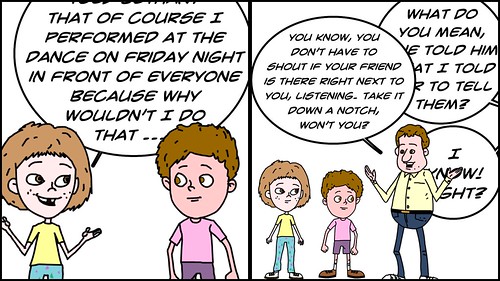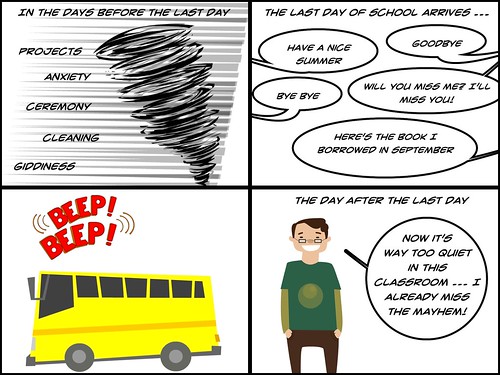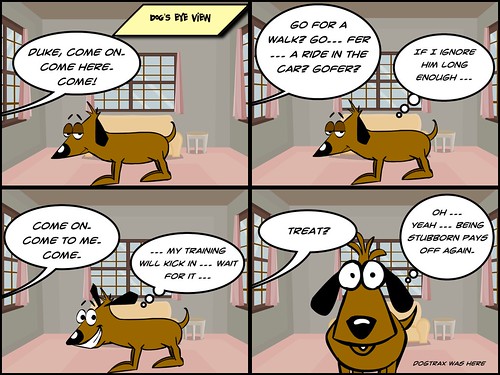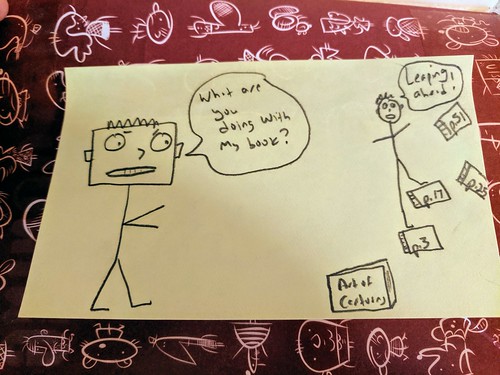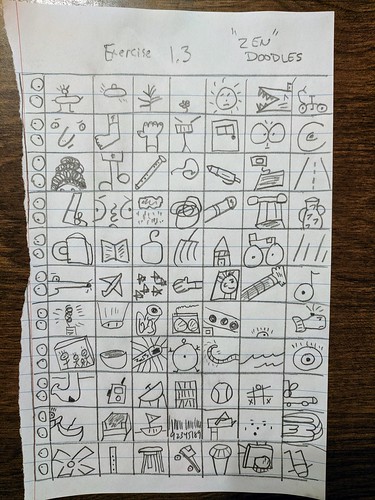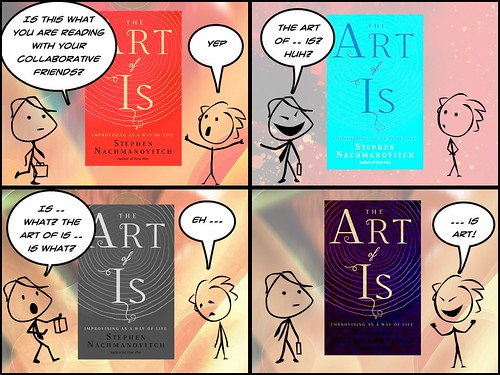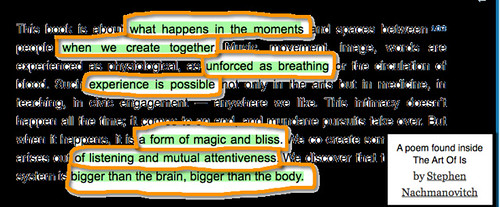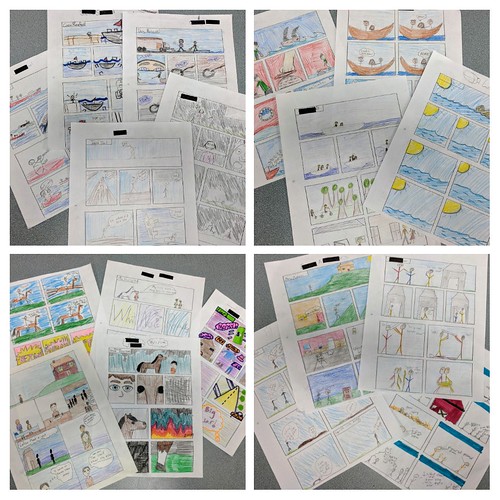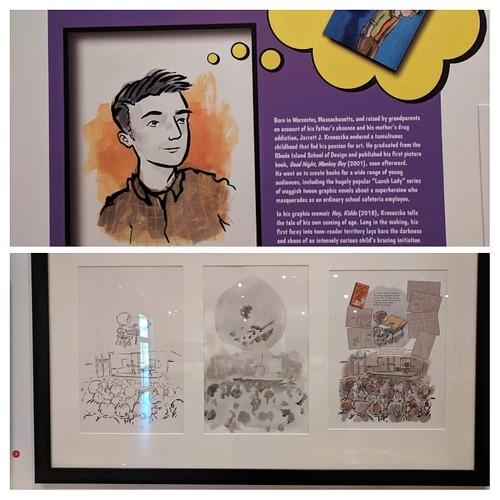Peace (begins),
Kevin
Category Archives: comics
Comics for the End of School
Over in another online space, I am working to make and share a comic every day for 100 days as part of a challenge. I don’t know how I will do it. But I am trying (I am on day 16!).
With the end of the school year (kids left yesterday but I still have today in the classroom), my comics were focused on those final, hectic days. I had a great class this year — sort of loud and most days edged on chaos on times, but overall, they were wonderful, and I will miss them, for sure.
Peace (in the frames),
Kevin
Dog’s Eye View: Cat on Break
This is the second in a periodic but not all that regular series of comics featuring a dog, whose personality (in my mind) is inspired by Duke, my dog. The comic is called Dog’s Eye View, and cats figure prominently at times. Like this one.
Peace (in the yard),
Kevin
Dog’s Eye View: A New Webcomic Series
We have a dog. His name is Duke. I’ve wanted to bring his spirit and personality into a comic for some time now.
Well, here we go.
In a series I am calling Dog’s Eye View, I’ll be posting comics now and then with a dog as the center of the action. The real Duke is an inspiration for the comic strip Duke, but who knows where this idea is going to go. I’m using my go-t0 comic-making app, so the art is limited. In other words, you might see common poses of the main character across strips.
Let me know if this comic strip idea, as seen from a dog, seems like a good idea …. Maybe I’ll even use some of the ideas in a books some of us are reading about the art of cartooning and move over to paper at some point!
:0
Peace (with kibbles and biscuits),
Kevin
The Practice of Cartooning
Bill, a DS106 friend, shared out that he is reading Ivan Brunetti’s Cartooning: Philosophy and Practice — which Brunetti describes as a sort of cartooning class in a book — and so a few of us — Sarah, Ron, etc. — are also getting the book. Mine arrived via library yesterday.

I joked that Brunetti telling the reader that they should do everything in sequence, to “not skip any of the assignments, jump ahead, or fudge on the instructions” seems counter to all of the ethos of DS106, but I will give it a try. I will not likely try all of the drawing/comic exercises here, but I’ll dip in now and then.
This activity — in which you draw 100 small boxes and then sketch without thinking to fill every box with an image — came out interesting, although I miscounted the boxes (see? already cutting corners!) and did it all in three sittings, not one.
Still, it is interesting to see what my brain came up with. Some of the boxes contain images I have no idea what I was thinking about.
Peace (in the frame),
Kevin
PS — on a strange tangent — when I started to type “cartooning” in my browser, a reference to a WordPress site that I helped my son make TEN YEARS AGO with paper-cut animations (he had a stable of invented characters on the theme of peas), and some live action, came up. He called the site Crazy Cartoonz. There’s not much there, other than a few movies that he made. (Somewhere, I have three large PDFs with pages of the cartoon/comics that he made as self-produced books). Ten years … wow … time flies. (He’s a media/film major in college right now).
See: https://crazycartoonz.wordpress.com/
Book Review: Math With Bad Drawings

I admit it upfront: it was the reference to stick figure drawings more than the math that got me interested in this book when I first saw the cover. But, truth be told, it was the math ideas and concepts, and Ben Orlin’s wonderful sense of humor and explanations of those ideas, that kept me reading on to the end.
Math with Bad Drawings (Illuminating the Ideas that Shape Our Reality) covers a lot of mathematical ground, and some of it went beyond me but most of it I found really intriguing and I learned a lot from Orlin (a math teacher, turned stick figure artist, who — it turns out — lives in the same city as I do). You can even follow Orlin’s blog, where he posts his comics and ideas.

What I enjoyed about the book — other than Orlin’s simple but funny drawings — was the expanded notion of math as a guiding principle and underlying force in our world, and the ways in which Orlin surfaces those ideas. Yes, we are covering probability, statistical analysis, number theory, logic, and even the weird underlying math of the Electoral College, and more, but Orlin — who knows his audience is likely neither math teachers nor math fanatics — uses clear explanations, connecting math to the real world as much as possible, and when all else fails, letting us know when we’re moving into geeky esoteric mathematical principles. At least, the reader is forewarned.
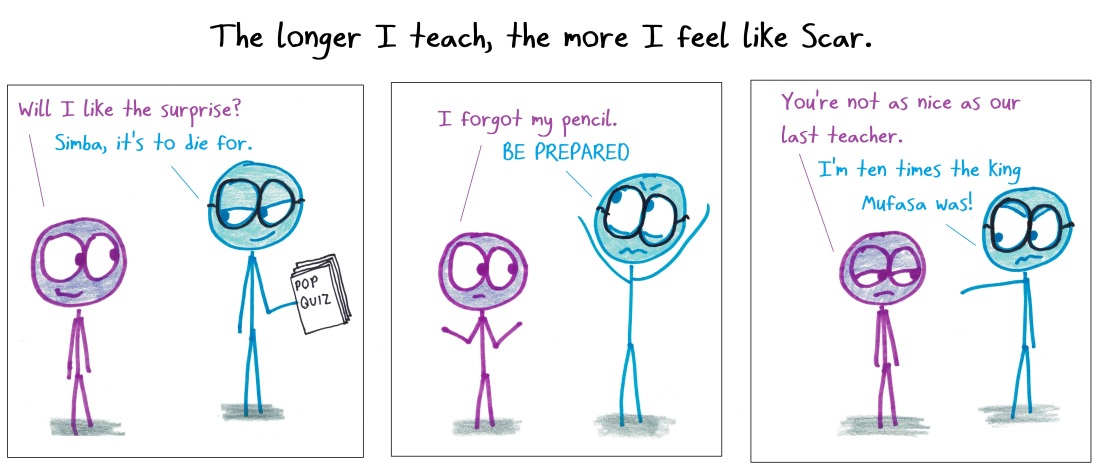
In an early chapter, Orlin introduces a strategy game called Ultimate Tic Tac Toe, which I brought into my sixth grade classroom as a challenge activity, and many of my students really enjoyed the game, which expands the game board and tweaks the rules to make an otherwise predictable game much more challenging. (You can even play a version of it online — against a computer or with a friend. Neat.)

via Wikipedia
Math with Bad Drawings is a recommended read for anyone interested in learning math beyond the textbook, even writers and teachers of young writers like me, and you’ll come out the other side of the text with an expanded knowledge of theory and practice, and a few ideas for making stick people drawings. So, you know, win win win.
What are the odds of that?
Peace (beyond numbers),
Kevin
The NetNarr Field Guide: A Journal Worth Exploring
Early on, I was pretty active in the Networked Narratives course as an open online participant, as a sort of satellite with a few others to the actual university course being taught by Alan Levine and Mia Zamora. My comic strip alter-egos — The Internet Kid and Horse with No Name — were also part of the Twitter conversations and activities.
At some point, I admittedly lost track in a peripheral way (this is the beauty of RSS feeds — I kept up with the basics of the course progress in my RSS reader from the NetNarr site).
So, I was pleasantly surprised by Mia’s sharing of the completed NetNarr Field Digital Alchemy Guide that all the classroom students contributed to as part of their research (I am not sure if any open folks added to the journal, too). The course itself began pretty dark — with all the ways technology is used against us, in terms of privacy and surveillance and more — and then moved into the light — how can we, as individuals, can make a difference and maybe help foster change for the better.
As noted at the NetNarr Journal site:
Each piece of writing is a review of one specific issue of concern about the internet of 2019, following ones we studied, e.g. the surveillance economy, digital identity theft, fake news, digital redlining, toxic data, self expression, bots. Writers were not asked to “fix” or “solve” these big problems, but offer suggestions for individuals how to better thrive in these environments, hence the idea of a “field guide”.
They are written as a dialogue between the students and their invented digital alchemist mentor and will include links to the “notes in the field” left as web annotations.
The work done in the Journal is really rich with topics and insights and resources, and I applaud my former classmates (sort of) for the depth of their sharing in this journal, which is a valuable resource for anyone struggling with finding balance between the potential and the pitfalls of this technologically connected world.
Consider their topics:
- Blackfishing
- Augmented Reality and Ourselves
- Selfies
- Online Fandom
- F-insta
- Job Scamming
- Kids and Screen Time
- Social Curation
- Catfishing
I, for one, only vaguely know what F-insta is, so that’s where I’m heading off to learn more from the NetNarr-ians. Which topic grabs your attention? Be a real reader, and leave some comments for the explorers. Pose a question. Offer insight. Engage.
Peace (inside the research),
Kevin
Where Art, Writing and Inspiration Meet: Graphic Novelist Jarrett J. Krosoczka
We had the pleasure of bringing graphic novelist Jarrett J. Krosoczka to our school yesterday. He gave presentations to four different grades about his work as a writer and artist, and shared his writing process and passions for making books. Krosoczka is the creator of the very popular Lunch Lady series, and his recent book is Hey, Kiddo.
His origin story of the Lunch Lady series was interesting. He told of going back to his old elementary school as an adult, and spending time with a lunch lady who used to serve him lunch, only to realize that she had a whole life outside of the school building (shocker). He wanted to write a picture book about the cafeteria staff, only to realize that one small strand of that book — a lunch lady as an undercover agent, whose mission is to protect the school and students — should be its own book, and that the comic format of a graphic novel was the way to tell that story. It took eight years from that spark of an idea to publication of the first book, he told the students.
Meanwhile, in preparation for his visit, students across our school have been working on projects, including graphic novel stories, in art class to recognize and celebrate our own lunch staff and other support staff workers in the building. During one of the sessions with Krosoczka, the staff from the cafeteria was brought in, and celebrated, with students performing a rap and short opera they wrote for them as appreciation.
My sixth grade students met him at the end of the day, after a long morning of state math testing, so it was a nice counterpoint to that to hear Krosoczka describe how he came to love reading, and then making, comics, and how it was his passion for art and writing — and lots of persistence in the face of rejection, particularly for his first picture book — that got him to where he is today, as the writer/illustrator on dozens of books.
It’s one thing to teach students the art of writing; It’s another to hear a writer tell of their experiences. Krosoczka wove the two strands together, and hopefully inspired young writers to write (and draw).
Peace (on the page),
Kevin
Digging Ever Deeper Down into The Art of Is
Terry has us tunneling into the book The Art of Is by Stephen Nachmanovitch, a book with the tantalizing subtitle of “Improvising As A Way of Life” that caught my attention. The introduction has my attention, for sure, as Nachmanovitch weaves in the concepts of improvisation to all sorts of ideas — music, art, text, collaborations, etc. I like the scope of it.
We’re inside NowComment as an annotation space (contact Terry if you want an invite), I am working to make art out of my reading experience. The comic above is a play on Terry’s invitation on Twitter and Mastodon, about “nibbling” at the edges of the work.
I then made this comic on my first reading start, trying to reframe the cover of the book as a piece of art and trying to explore the strange wording of the book’s title.
I’ve also been writing poetry — some of it found right inside the book —
Who knows where this improv will lead … following threads takes faith that the unraveling leads to understanding.
Peace (inside, outside, beyond),
Kevin
Classroom Comics and the Visiting Graphic Novelist
Thanks to funding support from our PTO, the school librarian, Pati M, and I (along with support by our art teacher, Leslie M) are bringing in the very talented Jarrett Krosoczka this coming Friday to share his work as a graphic novelist and maker of comics. Krosoczka’s most recent book — Hey, Kiddo! — is an amazing autobiographical examination of his childhood, with loss and love and art as the underpinning of his story.
I regularly use comics in my writing classroom (and did more when we had access to Bitstrips for webcomics but still use Make Beliefs Comix now and then) but I’ve been stepping it up a bit knowing that Krosoczka is coming to our school. And our art teacher has been focused on comics in art class, too, as our sixth graders work on graphic stories that are inspired by Krosoczka’s popular Lunch Lady series. Our students are celebrating non-teaching staff in our building by making them into superheroes, in comic format.
Meanwhile, I’ve had my sixth graders turning important scenes from the novels we are reading — Flush and The Mostly True Adventures of Homer P. Figg — into comic strip format, and it has been wonderful to see the creativity flourish this way. We also did Onomatopoeia sound effect comics a few weeks back.
More about Krosoczka via his TED talks:
and
Peace (in frames),
Kevin


